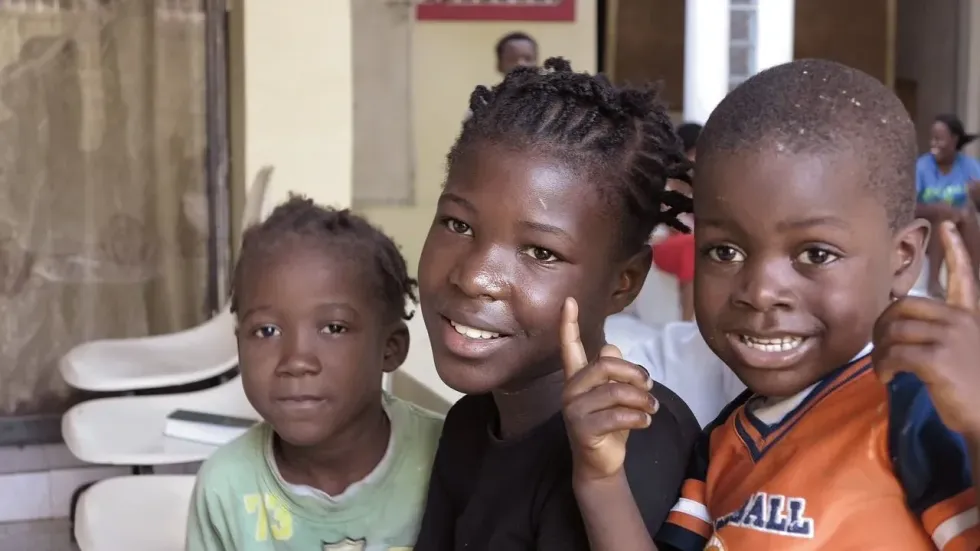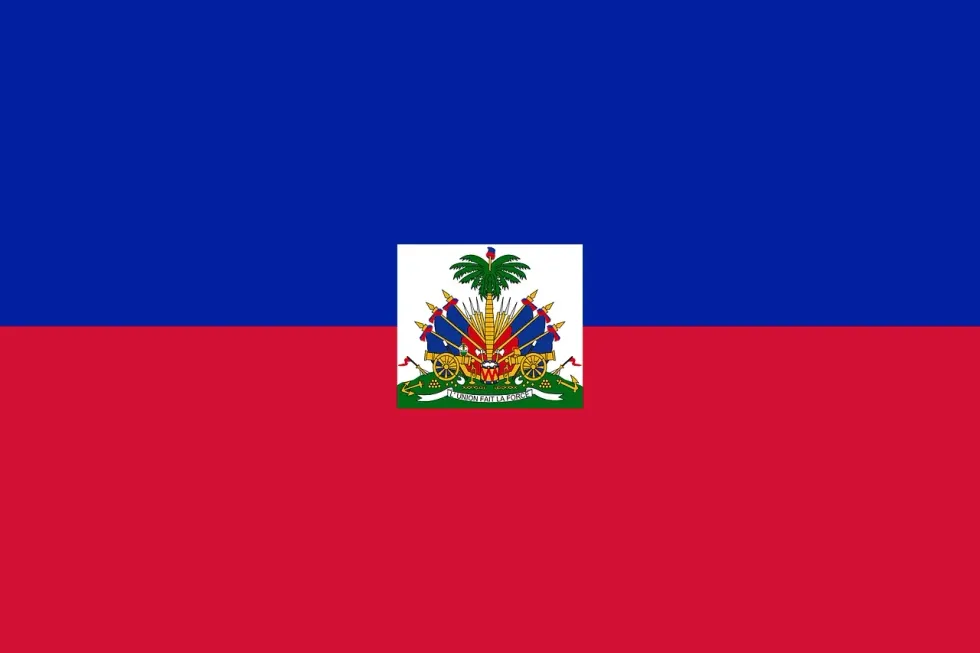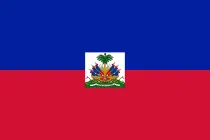51 Haiti Government Facts For Kids: History, Election And Much More

The Republic of Haiti, commonly called Haiti, is located on the island of Hispaniola and is a country in the Greater Antilles archipelago of the Caribbean Sea.
Haiti is a country to the east of Jamaica and Cuba and south of the Turks and Caicos Islands and the Bahamas, and the country also shares its boundary with the Dominican Republic. Originally inhabited by the South American Taino people, Christopher Columbus brought with him European people in 1492 on his first voyage.
The first European colony was established by Columbus himself and you can easily see this influence in the culture of the country. The island was then taken by Spain and named La Espanola.
Haiti formed part of the Spanish Empire until the 17th century, at least the first part of it. Then, some parts of the island were claimed by France and came under their control in 1697.
Under their control, the island was called Saint-Domingue. The Haitian Revolution was started by the enslaved and free people of color in between the French Revolution. The Haitian Revolution was started in 1791 by a former slave and the French Army's first black general, Toussaint Louverture.
His successor, Jean-Jacques Dessalines, who later became emperor, defeated the forces of Napolean Bonaparte after 12 years of conflict. Haiti was declared a sovereign nation on January 1, 1804.
It was the second republic of the Americas and the first independent nation of Latin America and the Caribbean. It was the first country to remove slavery.
There was political instability during the first century of Haiti's independence. Ostracism by the international community and debt payment to France became major issues.
The U.S. saw the opportunity and occupied the country from 1915-1934. Only after 1986, the country began to make a more democratic political system. Haiti has a rich history.
It is a founding member of the United Nations, Association of Caribbean States, Organization of American States, and the International Francophonie Organisation. Haiti is also a member of the World Trade Organization, International Monetary Fund, and the Community of Latin American and Caribbean State.
The president of Haiti is the head of state elected directly from elections. The government of Haiti is a semi-presidential republic.
The prime minister is the head of government and is in fact appointed by the president of the country. The prime minister is chosen from the majority party of the National Assembly. The president and the prime minister together constitute the government and the executive power in their hand.
The departments in the government are given powers by the central government without the consent of any third party. In the constitution set forth in 1987, the present structure of the Haitian government was established.
Facts About Haiti Government
Here are some unknown facts about the Haitian government most people do not know.
- The government of Haiti runs through a semi-presidential republic system. This basically means that the president is the highest power in the country. The president serves as the Head of State and a prime minister acts as the head of government. The president is elected by the people by conducting a presidential election, while the president elects the prime minister of the country with respect to the party in power in the National Assembly.
- The president and the prime minister of the country, both hold the executive power to take decisions. The legislative power, however, is given to the National Assembly. The National Assembly is divided into two chambers. The presidential guard is highly trained and has to protect the president at any cost.
- The central government of Haiti divides powers and responsibilities to all the administrative divisions of the government.
- The government is divided into three different branches. These are the executive branch, the legislative branch, and the judicial branch.
- Let's read about the different branches of Haiti's government. The executive branch now is made up of the elected president and the cabinet.
- The legislative branch gives the legislative power to the National Assembly. This assembly is again divided into the Chamber of Deputies and the Senate.
- The judicial branch of the government of Haiti is given the duties of enforcing the law in the country. The judicial branch has four different levels, the Magistrates' courts, Civil Court, Court of Appeals, and the Court of Cassation, also known as the Supreme Court.
- In the executive branch, an elected president is given the duties for five years and the president cannot serve the government consecutively. The president will appoint the prime minister and then the prime minister appoints the cabinet ministers.
- It is the job of the prime minister to make sure that the Cabinet upholds the law and its duties as given by the National Assembly.
- The matters of National Defence are all in the hands of the president and the prime minister as they both are the highest authorities in the Republic of Haiti.
- The legislative branch is divided into the Chamber and the Chamber of Deputies. All the members of the Chamber are elected by the public and they serve for a period of four years.
- Members of the Senate however are elected and they serve for six years.
- One-third of the members are re-elected or replaced after the elections every two years.
- In the judicial branch, there are four courts that are put up in this branch of the government. The judges on the Supreme Court branch are appointed by the president and they serve for 10 years at a time.
- It is the duty of the judges to appoint prosecutors to try civilian and military cases of the country of Haiti.
- Did you know the legal system in the country of Haiti is based on the French civil law system?
- The constitution of the country of Haiti was established on March 29, 1987 and as a semi-presidential republic. It is a multiparty system and a bilateral parliament.
- Haiti is known to be the poorest country in the Caribbean and is also one of the poorest countries in the whole world.
- Around 60% of the population in Haiti is still living in poverty.
- There are 10 administrative departments in the government of Haiti. Those are Nord-Ouest (Port-de-Paix), Artibonite (Gonaïves), Nord (Cap-Haïtien), Nord-Est (Fort-Liberté), Centre (Hinche), Grand'Anse (Jérémie), Ouest (Port-au-Prince), Sud (Les Cayes), Nippes (Miragoâne), and Sud-Est (Jacmel).
- These 10 departments are divided into 42 arrondissements, 145 communes, and 571 communal sections. These serve as second and third-level administrative divisions of Haiti.
Haiti Government's History
The history of the government of Haiti is somewhat influenced by many different cultures of the world. Here are some facts about the history of the country.
- Slavery, colonization, and political turmoil make up a large part of the history of the nation of Haiti.
- The Spanish colonized Haiti first, followed by the French. This process made the locals of Haiti revolt, wanting to be free men of this country.
- This led to a revolution and the start of Haiti getting the much-needed independence in 1804.
- The 212 years that followed after independence were full of violence and instability.
- General Toussaint Louverture started the revolution and his successor continued it. Jean-Jacques Dessalines later became the Emperor of Haiti and established the first constitution of Haiti.
- The new constitution laid down a lot of ground rules in Haiti, but people were not very firm on the rules and that led to instability in the country.
- A successful coup d’etat in 1806 separated Haiti into two parts, it divided the country into a northern authoritarian state and a southern republic.
- 1843 saw the island Hispaniola again divided into two parts, Haiti and the Dominican Republic.
- Haiti immediately came under the rule of the parliament until 1849.
- The second emperor then took control of Haiti who ruled until 1859.
- After the emperor's rule ended in 1859, the nation was established as a republic by a military regime until 1911.
- Between 1911 and 1915, the country saw a time of extreme political turmoil. Six different presidents were either killed or removed during this period in Haiti. Elections didn't work and the presidency just kept on falling.
- After this, the U.S. stepped in, and from 1915-1935, the U.S. took charge to carry out reforms in Haiti and also to collect debts taken from U.S. banks. For a brief period of time, the takeover by the U.S. brought about a democratic government in the country.
- Until 1986, elected presidents and dictators kept on controlling the country and it did not help much.
- In 1986, the military came and overthrew the last dictator and a new constitution was made to re-establish democracy in the country.
- But it was not successful and the military was in control of the country from 1991-1994.
- Two elected presidents were seen between 1996-2004 and remarked the presence of democracy for the Haitians.
- But the happiness of the Haitians was not permanent and there was one more military coup d’etat in 2004 that stopped the democratic government again.
- Violence kept happening and after 2006, former President René Préval took control of the government. The president remained in power until 2011.
- There was a presidential election in 2011 and a new president was elected.
- President Michel Martelly stepped down from his job in February 2016 and an interim president was appointed in his place.
- Jovenel Moïse was the president of the country from 2017 until 2021 when he was assassinated. The current president is Ariel Henry.
- In the '90s, a U.S.-led operation in the country happened. The Jean-Bertrand Aristide government disbanded the military of the country then but Jean-Bertrand Aristide could not disarm the military members. The U.S. and the United Nations started to make a new Haitian police force in the country to counter the violence and succeeded. The heads of the regime left the nation and the president-in-exile, Jean-Bertrand Aristide, was able to return to the National Palace on October 15, 1994.
The Legal And Economic System In Haiti
Here are some economic facts about Haiti, along with some legal facts of how the country is run.
- Haiti is one of the poorest countries in the world and is the poorest in the American region. The main reasons for this is due to corruption, poverty, bad infrastructure, and no presence of any significant health care. Around 57% of the population is considered deprived in the country.
- Even after being a popular tourist destination, Haiti's economy needs reform. The Institute for the Protection of National Heritage has found 33 historical monuments and the historic center of Cap-Haïtien to be preserved. The difference in development in urban areas and rural areas needs to be sorted fast for the economy to grow for the Haitians.
- Haiti is the founding member of the United Nations, the Association of Caribbean States, and the International Francophonie Organisation, as well as the Caribbean Community, and the Organization of American States, while also retaining membership of the World Trade Organisation, the Community of Latin American and the Caribbean States, and the International Monetary Fund. All these help tremendously in the economy of the country.
- The legal system in Haiti is based on the French Napoleonic Code. There are four levels of the judiciary. These are the courts of appeal, the Court of Cassation, Civil Court, and Magistrates' courts. All these roles are given by the president for a term of 10 years.
- Civil and criminal cases are run by government prosecutors that are appointed by the courts. There are also labor, land, and children's courts. When the constitution is suspended, military courts are activated and function for both civilian and military cases of the Haitians.

The Election Process In Haiti
Let's learn about the electoral system of Haiti.
- Elections in Haiti are a little different. The president is elected using a two-round system in which a second round is conducted if the first round shows no majority in the vote. The Chamber of Deputies has 119 members and they are also elected with a modified two-round system. In the first round, the candidate should get either more than 50% of the vote or get more than 25% of the vote than the second-placed candidate. If these criteria are not met, elections in the second round see the candidate with the most votes win.
- Senate elections are also similar. Every two years, one-third of the 30-member Senate is reelected or replaced.
We Want Your Photos!
More for You
Bachelor of Arts specializing in English

Ritwik BhuyanBachelor of Arts specializing in English
A skilled content writer, Ritwik holds a Bachelor's degree in English from Delhi University. He has refined his writing abilities through his past experience at PenVelope and his current role at Kidadl. In addition to his proficiency in writing, Ritwik has pursued his passion for flying by achieving CPL training and becoming a licensed commercial pilot. This diverse skill set highlights his commitment to exploring multiple fields. Ritwik's experience in the aviation industry has provided him with a unique perspective and attention to detail, which he brings to his writing.
Bachelor of Commerce

Niyati ParabBachelor of Commerce
With a background in digital marketing, Niyati brings her expertise to ensure accuracy and authenticity in every piece of content. She has previously written articles for MuseumFacts, a history web magazine, while also handling its digital marketing. In addition to her marketing skills, Niyati is fluent in six languages and has a Commerce degree from Savitribai Phule Pune University. She has also been recognized for her public speaking abilities, holding the position of Vice President of Education at the Toastmasters Club of Pune, where she won several awards and represented the club in writing and speech contests at the area level.
Disclaimer
1) Kidadl is independent and to make our service free to you the reader we are supported by advertising. We hope you love our recommendations for products and services! What we suggest is selected independently by the Kidadl team. If you purchase using the Buy Now button we may earn a small commission. This does not influence our choices. Prices are correct and items are available at the time the article was published but we cannot guarantee that on the time of reading. Please note that Kidadl is a participant in the Amazon Services LLC Associates Program, an affiliate advertising program designed to provide a means for sites to earn advertising fees by advertising and linking to Amazon. We also link to other websites, but are not responsible for their content.
2) At Kidadl, we strive to recommend the very best activities and events. We will always aim to give you accurate information at the date of publication - however, information does change, so it’s important you do your own research, double-check and make the decision that is right for your family. We recognise that not all activities and ideas are appropriate for all children and families or in all circumstances. Our recommended activities are based on age but these are a guide. We recommend that these ideas are used as inspiration, that ideas are undertaken with appropriate adult supervision, and that each adult uses their own discretion and knowledge of their children to consider the safety and suitability. Kidadl cannot accept liability for the execution of these ideas, and parental supervision is advised at all times, as safety is paramount. Anyone using the information provided by Kidadl does so at their own risk and we can not accept liability if things go wrong.
3) Because we are an educational resource, we have quotes and facts about a range of historical and modern figures. We do not endorse the actions of or rhetoric of all the people included in these collections, but we think they are important for growing minds to learn about under the guidance of parents or guardians.







